
Thien Mu Pagoda is a symbol that has been associated with the poetic Hue land for many generations. Located right next to the gentle Huong River, with unique architecture, Thien Mu Pagoda is the most prominent tourist destination as well as pilgrimage place of the ancient capital.
Anyone who has ever been to Hue but has not yet visited Thien Mu Pagoda is not considered to have fully felt the beauty of this dreamland. The temple has undergone many changes, ups and downs of history and becomes one of the iconic images of the city. Along with Hue Citadel, the Perfume River is calmly crossing, the ringing bells of Thien Mu pagoda have entered many poems and music of Hue people for ages.
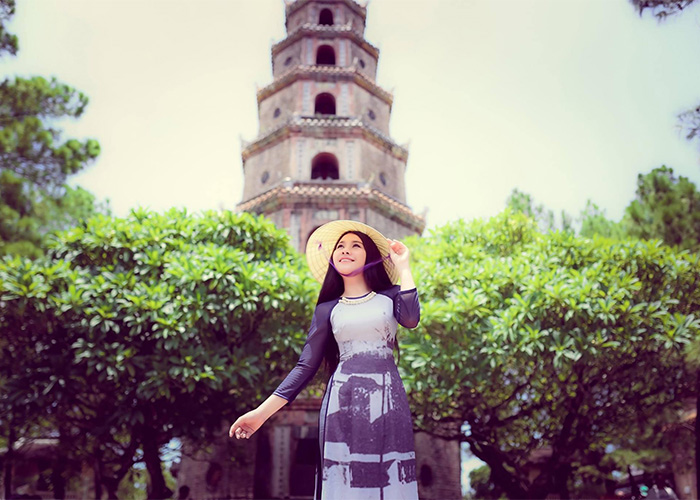
Never run out of Dong Nai canal. The new Thien Mu pagoda has wronged the curse.
The special location of Thien Mu Pagoda in Hue
Thien Mu Pagoda is an ancient temple located next to the Perfume River in the west of Hue city. The temple is located on Ha Khe hill, on the left bank of the Perfume River. From the city center, it only takes about 5km by motorbike or car, you will see the beauty of this famous temple.
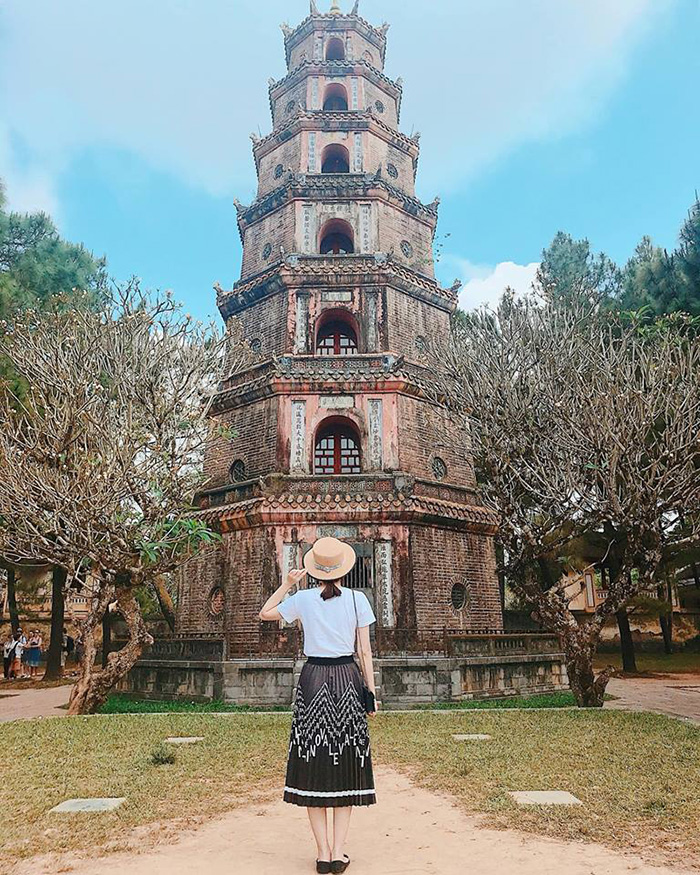
Thien Mu Pagoda is home to many beautiful photo corners.
Thien Mu Pagoda has a history of more than 400 years
Thien Mu Pagoda (also known as Linh Mu Pagoda) is located in An Ninh Thuong Village, Kim Long Ward, Hue City. This is a famous spiritual destination in the ancient capital, which is also a famous tourist destination.
Built in 1601 under Nguyen Lords, Thien Mu Pagoda is the oldest pagoda in Hue today. The beauty of this ancient temple is made up of a combination of historical, spiritual and unique cultural and artistic values. Thien Mu pagoda was classified by King Thieu Tri as “Than Kinh Nhi Thap Canh” (20 landscapes of Than Kinh land) with the poem ‘Thien Mu sharing the sound’ composed by the king himself and carved into stone stele built near the temple gate .

Hue trip will not be perfect without visiting Thien Mu Pagoda.
Legend has it that before the construction of Thien Mu pagoda , on Ha Khe hill, there was a pagoda named Thien Mo or Thien Mau. This is a Cham temple.
After that time, Lord Nguyen Hoang came to Thuan Hoa to be a concurrent retainer of the whole Quang Nam region, and he personally examined the land here to prepare for the plot to expand his business later to build the Giang Son. for the Nguyen family. Once wandering the horse’s hooves along the banks of the Perfume River upstream, he suddenly saw a small hill protruding beside the meandering green Huong River. This place is like a dragon looking back, this hill is now Ha Khe hill.
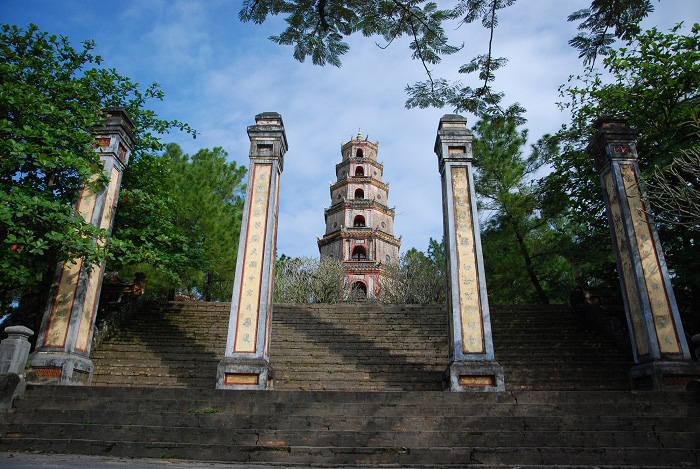
Stone steps lead up to Thien Mu Pagoda.
Local people said that this place is also known as Thien Mu Son because at night often an old woman in red and green pants appears on the hill and once said to everyone: “Then there will be a god To set up a pagoda to gather holy spirit, to endure a long artery, to give a strong South country “. Lord Nguyen Hoang, after listening, agreed with the people’s statements and was extremely happy. In 1601, he built a pagoda on a hill overlooking the Perfume River in front and named it “Thien Mu”.
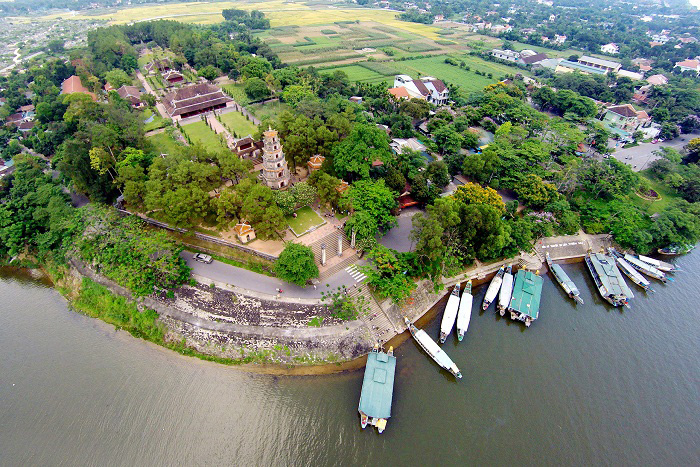
Thien Mu Pagoda viewed from above.
The unique architecture of Thien Mu Pagoda
Thien Mu Pagoda is a religious work with many unique architectural features of the ancient capital of Hue. Seen from above, the overall temple looks like a giant tortoise reflecting down the Perfume river next to it. The temple is surrounded by stone walls built in two solid rings.
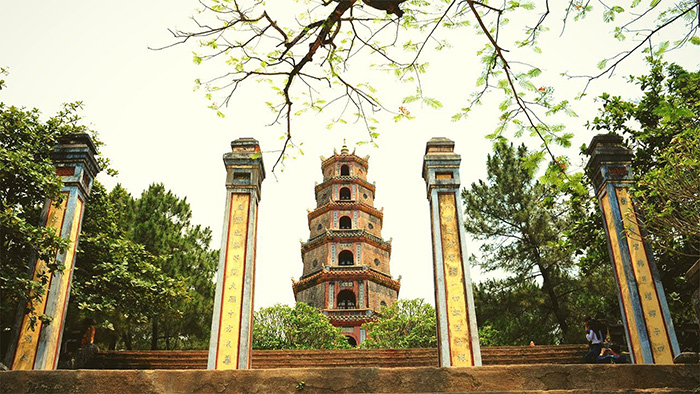
Thien Mu Pagoda is a religious work with many unique architectural features.
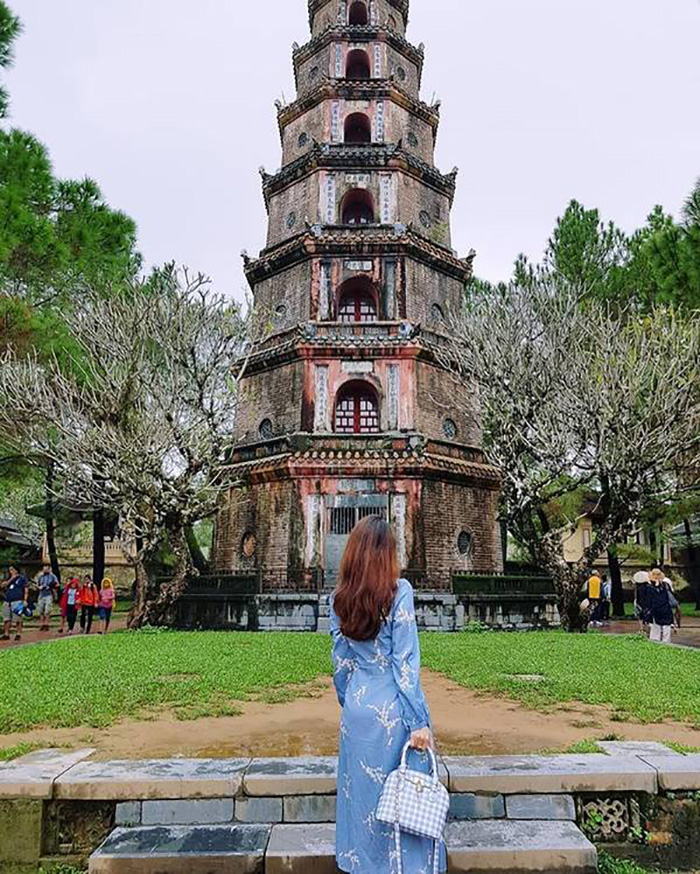
Thien Mu Pagoda is the most beautiful in Dang Trong.
Triple gate
Tam Quan Gate is the main entrance to the pagoda with a 2-storey eight-roof structure. There are 3 paths through the gate, each with wooden plank doors, tied with belts and sturdy copper nails. On both sides of the bugs, there are statues of guardians guarding them.
Phuoc Duyen Tower
Phuoc Duyen Tower is the most prominent work and is an impressive spot for visitors when visiting Thien Mu Pagoda . This tower is built of brick 21m high, consists of 7 floors and was built in 1844. Each floor has worship Buddha statue. Inside the tower there is a spiral staircase leading to the top floor, where a golden Buddha image was formerly known.
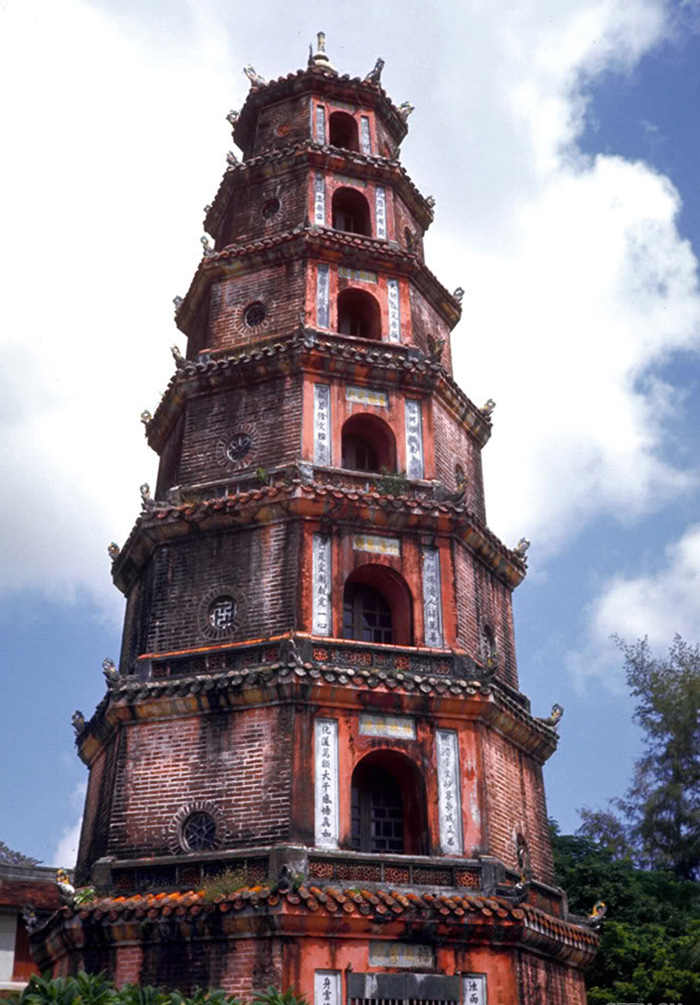
7-storey Phuoc Duyen Tower at Thien Mu Pagoda.
Dai Hung Palace
Dai Hung Palace is the main hall of Thien Mu Pagoda . Inside the Buddha Maitreya worship has big ears to listen to all the sufferings of beings, a big belly to tolerate the people’s mistakes and a big mouth to keep a peaceful and peaceful mind in the world. miserable. Above there is a non-engraved picture with 4 words “Linh Tryu Cao Phong”.
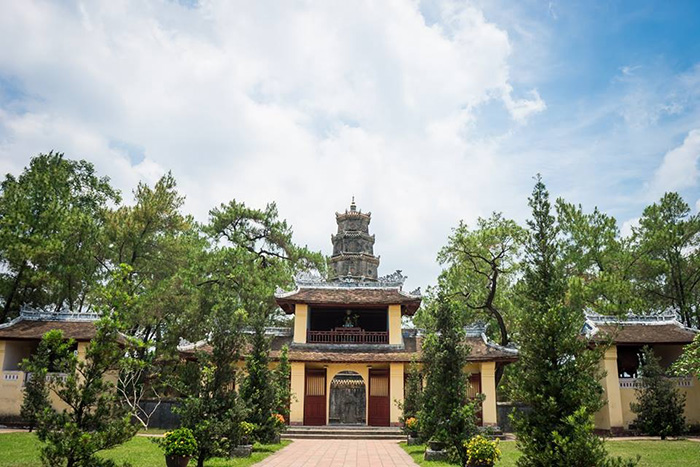
Dai Hung Palace of Thien Mu Pagoda.
In addition, there is also a quite large bronze bell hanging here, touching the rectangle. Passing the place of worshiping Di Lac Buddha is Tam The Phat Temple, on the left and right sides are Van Thu Bo Tat and Pho Hien Bo Tat. Following the side of the electricity to circle around the back of the garden is the display of the car of the late monk Thich Quang Duc – the monk burned his body against the once persecuted Buddhist regime. Behind is the tomb of the late monk Thich Don Hau, a monk who has made great contributions to the revival of Buddhism.

The car of the late monk Thich Quang Duc, who on June 11, 1963, burned himself by himself in protest of the persecution of Buddhism.
Jizō Temple
Jizō Temple is located behind Dai Hung Palace and built on the foundation of Di Lac Palace, engraved with many images with unique architecture.
Quan Yin Palace
This is the shrine located at the end of the pagoda, located in the middle of the forest and is decorated quite simply, with no patterns but evokes a special trragal atmosphere. In the main hall is the statue of Quan The Am Bodhisattva, cast in black bronze with gentle facial expressions and sitting on the lotus, above is the non-Quan Yin Dien panel. In front of the bronze statue of Quan The Am, there is also a stone statue in the glass case, with elongated fingers, soft and flexible lines. The two sides worship the Dien Vuong cross.
The beautiful sala trees in the temple grounds
In the campus of Thien Mu pagoda of Hue city, there is a flower blooming all year round creating a beautiful and meaningful scene, which is Sala flower. This flower brings peace and tranquility.

Anyone who comes to Thien Mu Pagoda is in awe of the beauty of sala flowers.
Sala trees also have other names such as Vo Uu, Ham Rong or Ngoc Ky Lan. This flower is grown in many temples, shrines and temples that originated in India and is associated with the legend of the birth of Buddha Shakyamuni. Legend has it that the Buddha was born under the Sala tree by Queen Maya. In the Great Eight Nirvana Sutta also recounts that the Buddha passed away under two sala trees. When He lay under the tree resting, suddenly the whole tree bloomed bright red, petals falling around him like rain.
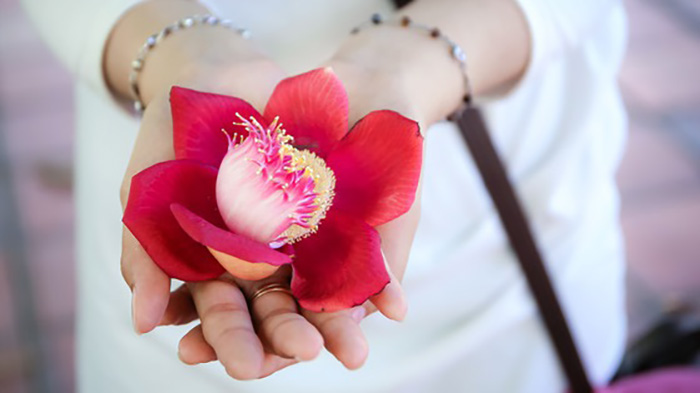
The sala flower represents the body of a woman in Indian culture, while in Buddhism, the sala flower embodies the understanding and feeling of life with a pure, unfocused look.
The sala flower represents the body of a woman in Indian culture, while in Buddhism, the sala flower embodies the understanding and feeling of life with a pure, unfocused look.
To tour Hue , especially on hot summer days, visitors look at the house remember Thien Mu Pagoda with over 400 years of age. After visiting, admiring the scenery and learn about the beauty of architecture as well as stories associated with the ups and downs of the most sacred temple in Hue, take a moment to enjoy the fresh beauty of the strange sala but familiar. The flowers symbolizing peace and tranquility will ease the sultry heat in the middle of the summer.
